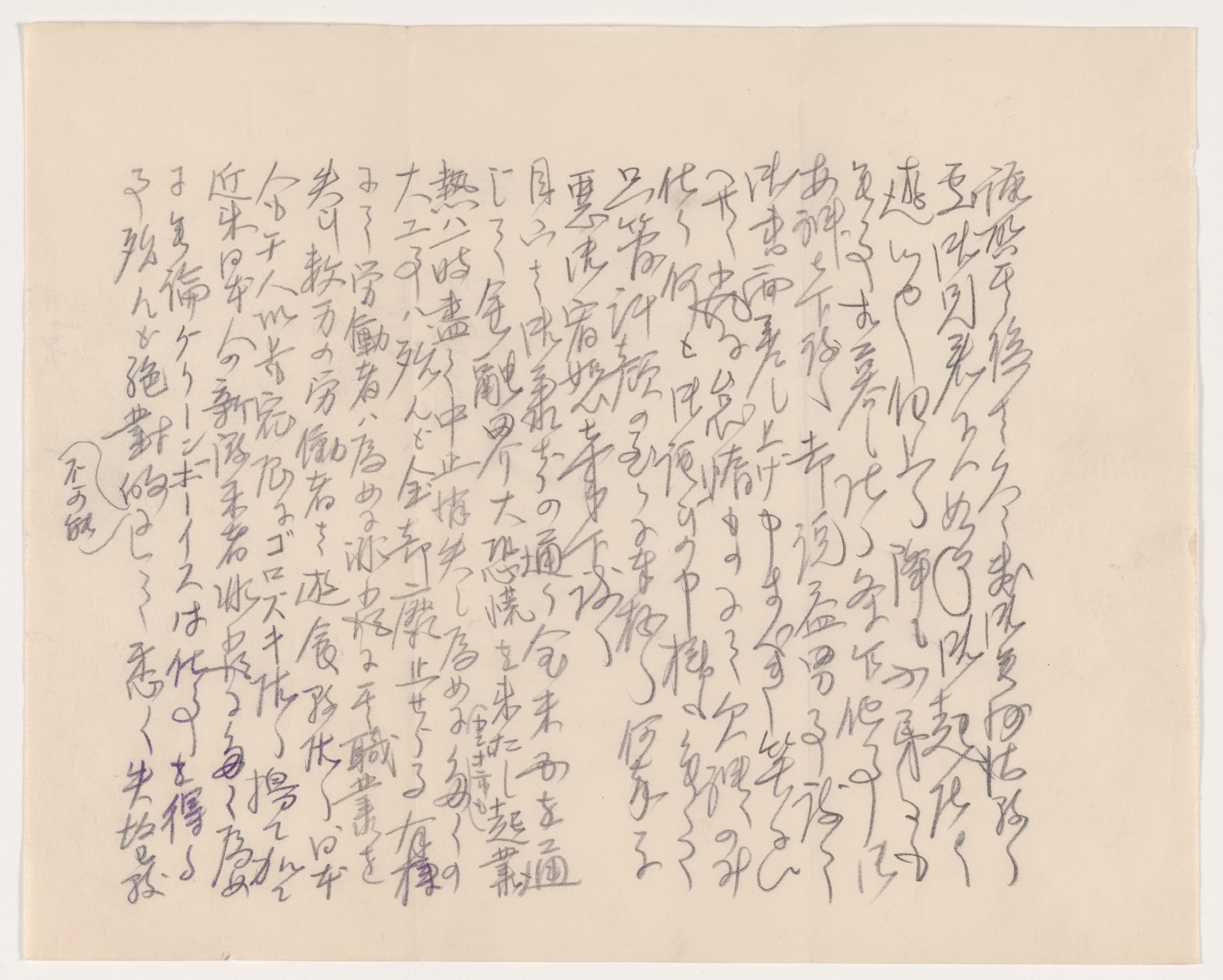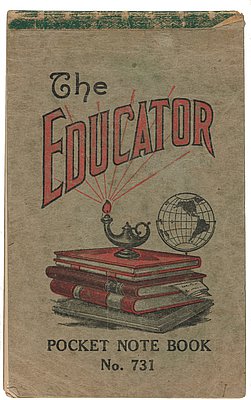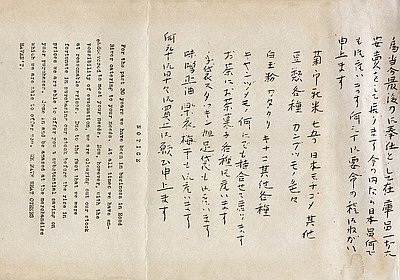This letter, which has been translated into English, was written by Masuo Yasui in 1907, two years after he had moved to Portland and four years after he had immigrated to the Pacific Northwest from Nanukaichi, Japan. He is writing to his brothers, Taiitsuro Yasui and Renichi Fujimoto, who were living in the American West working on railroad crews.
When he wrote this letter, Masuo was about twenty years old, working as a house servant and attending night school. His diaries tell us that his ambition was to go into business, and he carefully observed the workings of the region’s market economy. During his free time, he explored Portland and socialized with friends in Nihonmachi—Portland’s Japantown—and Chinatown and also was connected to other cultural communities in the city. Proficient in English, he read the newspapers, and his letters to friends, family, and associates reflect his understanding of the U.S. economy and the effect the global economy had on immigrant labor. He also recognized the tensions the system created in a society that was susceptible to ideas of white supremacy and nativism.
The recession Yasui refers to in the beginning of this letter was instigated in October 1907, when two investors tried to corner the market shares of United Copper. The news of their failure led depositors to demand their money from the banks connected to the investors, and a panic ensued as depositors rushed to empty their bank accounts. But most banks in 1907 did not have enough gold coinage on hand, which “backed” the bank notes, to handle a rush, and they were forced to close their doors. The panic destabilized the nation’s monetary system and led to declines in the value of stocks listed on the New York Stock Exchange. In an effort to stop the fall, banks and financial clearinghouses closed their doors.
The panic on the East Coast had immediate consequences in Oregon. In the state’s larger cities, the banks belonged to clearinghouses, private institutions that simplified debit and credit transactions between customer banks by centralizing exchanges. Clearinghouses also ensured that participants in a transaction followed the rules and regulations, that the sale of stocks and bonds was legal and complete, and that banks maintained enough gold and/or silver coinage to back their deposits.
When banks and clearinghouses on the East Coast closed in October 1907, clearinghouses across the country could no longer clear checks or certificates written by their member banks. Banks also stopped receiving gold shipments from those clearinghouses, which they relied on to guarantee customer deposits, and feared a run on deposits when people realized their transactions were not clearing. On the night of October 28, 1907, the presidents and vice-presidents of the Portland Clearing House member banks climbed aboard a special train car and hurried to Salem to meet with Governor George Chamberlain. They persuaded him to proclaim a bank holiday—that is, to close the banks—for five days. During that time, depositors were issued cashier's checks for small expenses and to meet payroll demands.
The bank holiday was extended more than once, each time with the assurance that the crisis was contained and would be over soon. The Portland Clearing House mitigated the problem by offering loans to the banks—using timber, wheat, and canned fish as collateral—and making the proceeds available in the form of $5, $10, and $20 certificates. The certificates were then used in financial transactions throughout the state.
The closure of banks, the suspension of bank loans, and the volatility of the market led to a nearly complete halt to large-scale infrastructure projects, which in Oregon primarily meant railroads and road-building. Thousands of laborers were either released or put on hold, and many left the state. Others, as Yasui describes in this letter, stayed put, waiting for the crisis to pass. Immigrant laborers were particularly vulnerable—they had less familial support, could not easily return home, and were more likely to be let go from their jobs. As logging and railroad camps emptied, rooming houses in larger cities and towns filled up, leading to price gouging and overcrowding.
Yasui observes that “even whites” had been affected, acknowledging both the extent of the economic crisis and the inequality rampant in the U.S. labor economy. White workers were likely to get the skilled work that paid more and had better conditions and more job security. Although there is little evidence that violent crime was a direct result of the crisis, the perception that it was demoralized people. The city was in distress, Yasui wrote, and the Japanese labor community was suffering.
Yasui’s description of Portland during the Panic of 1907 provides an intimate view of how Oregon was connected to the national economy and to the decisions—and mistakes—people made from thousands of miles away. An investment scheme gone wrong in New Jersey led to a banking crisis in New York, which led to large-scale unemployment and poverty conditions in Portland’s Japantown. Economists now study the 1907 crisis to better understand the economic crisis in 2008, when the similarities were striking, both in terms of systemic failures and global impact.
The panic of 1907 led to an important banking reform in 1913—the Federal Reserve System. At the height of the crisis, the country’s private clearinghouses kept the worst of the wolves at bay, primarily by collectively propping up vulnerable banks, negotiating with foreign banks and industries, and keeping some form of currency in circulation. The Federal Reserve was modeled after that system and now serves as the people’s clearinghouse.
The 1907 recession lasted about a year before the economy rebounded. By the end of 1908, Masuo Yasui was in Hood River, running his store. He would eventually become a labor contractor himself, negotiating with companies to get hundreds of newly arrived Japanese laborers placed on railroad and road-building crews. It was one of his many business successes.
Further Reading
Moen, Jon R., and Ellis W. Tallman. "The Panic of 1907." Federal Reserve History, 1915.
"Oregon Banks Close Five Days." Portland Morning Oregonian, October 29, 1907.
"Bank Holidays to be Continued." Portland Sunday Oregonian, November 3, 1907.
"Banks Will Issue Their Own Paper Certificates." Portland Morning Oregonian, November 4, 1907.
Written by A.E. Platt, © Oregon Historical Society, 2024.



